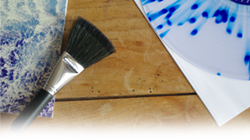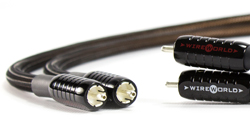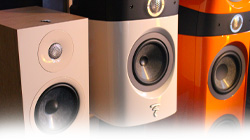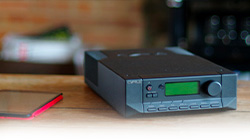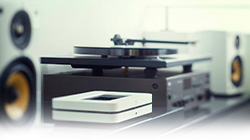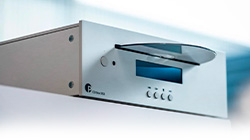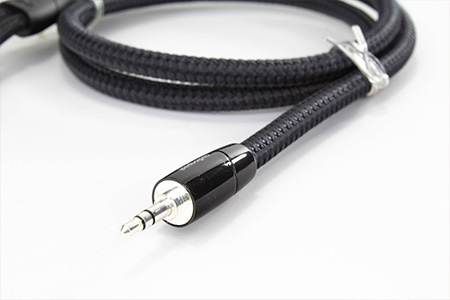
Since the 1980s, American brand Audioquest has designed high-end quality products. After having offered headphones and cartridges, the manufacturer has come back to its roots and to what it does best: Hi-Fi cables. Thanks to increasingly advanced innovations, Audioquest is now one of the best Hi-Fi cable manufacturers and won the unanimous support of both professionals and audiophiles. Among the most prestigious series, there’s the Bridges and Falls. It’s a series which is divided into seven ranges. Each one of these ranges is composed of the purest materials and the most innovative technologies, and all this at a very affordable price. Let’s take a look back at this affordable and high-performance series.
Audioquest Tower and Evergreen
The two most affordable ranges of this series are Tower and Evergreen. The Tower consists of an interconnect cable which comes in RCA/RCA or Jack 3.5/Jack 3.5. The Evergreen comes in RCA/Jack 3.5 or RCA/RCA. Regarding the design, it’s an LGC (Long Grain Copper) cable enabling to reduce interference. It’s more effective than an OFC cable for instance. This material was selected following studies, with the goal of obtaining a purer product generating less distortion.
The connectors are gold plated and seamless. The objective here is also to reduce the possible causes of distortion in the sound.
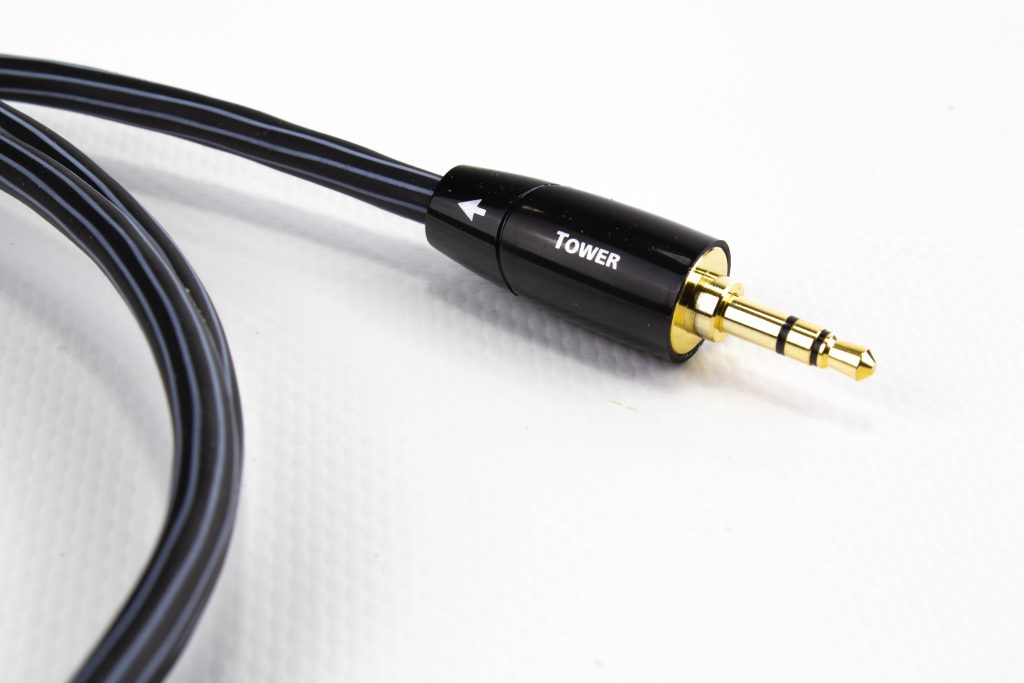
The whole cable is insulated via a polyethylene sheath to reduce interference caused by radio frequencies. In fact, Audioquest has understood that materials in direct contact with copper participates in absorbing energy and increasing distortion. That’s the reason why the brand searched for the right material. Expanded polyethylene properties give it a very low impact on the cable. During the manufacture, Audioquest adds air in the cable. The air allows to drastically reduce energy loss. Then, the cable is shielded using NSD (Noise Dissipation System) metal coating. Once more, it aims at reducing radio interference to the maximum.
The design of these Tower and Evergreen interconnect cables features an asymmetrical double-balanced geometry. The purpose is to reduce impedance against the cable weight in order to create a richer, more dynamic and, above all, quieter sound reproduction. These cables can be used on entry-level phono preamplifiers such as the Rega Mini A2D or headphone amplifiers like the Pro-Ject Headbox S2. These are high-performance cables considering the price, and they are still a reference for the brand.
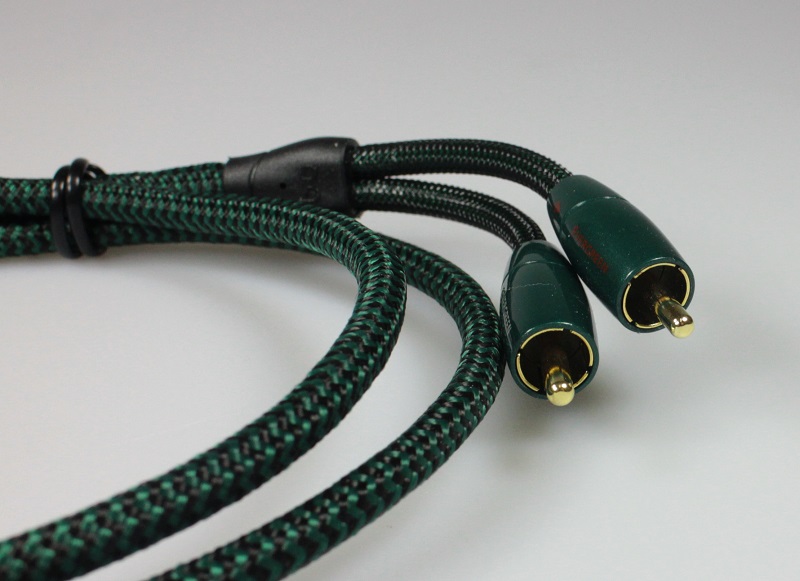
Golden Gate and Big Sur
Audioquest changed some things for the Golden Gate and Big Sur ranges. These also consist of RCA/RCA interconnect cables, but there’s also a phono cable for the Golden Gate, and an RCA/RCA or RCA/Jack 3.5 interconnect cable for the Big Sur. This time, PSC (Perfect Surface Cooper) was used. This is a new technology used by Audioquest which consists in exploiting the purest copper possible and handle it under specific circumstances. The stated goal is to reduce interference during the conception and also in the sound reproduction, as well as increasing conductivity. This material also has the advantage of being cheaper than some other metals having the same properties. Therefore, Audioquest guarantees both quality and affordability.

Just like the range’s other cables, the connectors are gold plated and seamless, the insulation is made of expanded polyethylene and the cable features NSD shielding. The geometry of the cables remains asymmetrical and double-balanced. Once again, the American manufacturer is seeking to optimise each cable as best as possible.
Regarding sound, we realise that all the efforts made during the creation paid off. The soundstage is detailed and precise, while remaining balanced on all timbres. The bandwidth is pretty wide. Both cables of the range are excellent to upgrade a Hi-Fi system. Sound reproduction is drastically boosted for a reasonable price and a clever design.

Sydney
The Sydney range consists of an interconnect cable available in RCA/RCA or RCA/Jack 3.5. There’s also the PSC component which aims at reducing distortion and optimise the capacities of the cable. Insulation is similar to previous cables, i.e. expanded polyethylene to prevent loss in the signal path.
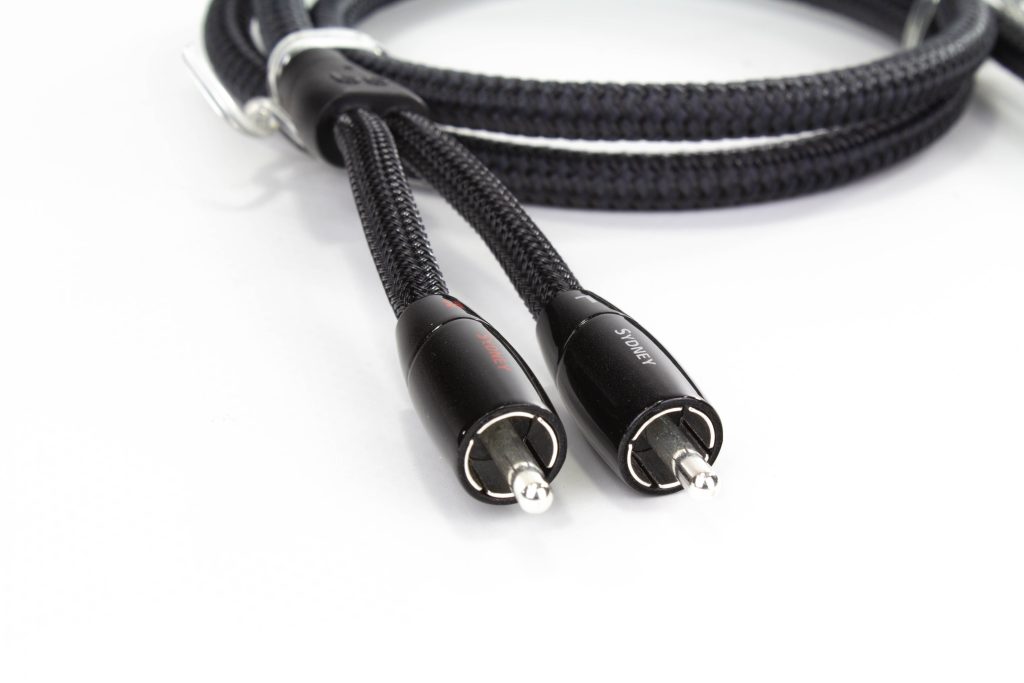
The interconnect cable’s shielding was revamped with a carbon-made synthetic material. Audioquest decided to use three layers of this material for increased cable insulation against interference. As a consequence, the cable is perfectly insulated and shielded.
The connectors have also undergone a small improvement in this range. This time, Audioquest selected pure silver-plated purple copper connectors for the sake of further optimising signal-to-noise ratio. This component provides a clearer and more neutral sound during the reproduction, without affecting the signal. The seamless design avoids brazing and thus possible distortion effects which can occur during the signal transmission.
The Sydney interconnect cable still has an asymmetrical and double-balanced geometry. All these specificities make it a very high-quality cable. The signal is transmitted smoothly. The sound is clear, precise, very clean and no register is more favoured than another. It’s perfect to significantly improve mid-range systems.
Yosemite
As for the Yosemite range, Audioquest focused on the phono cables. There is the Yosemite Turntable phono cable which comes in RCA/RCA format, but also the Yosemite Tonearm cable available in straight DIN/RCA format. Solid conductors are always made of outstanding purity PSC and always handled using the same techniques.
Here, the difference lies in the cable insulation. Indeed, compared to the previous ones, this cable uses a more advanced technique to reduce interference and signal loss. It employs the same polyethylene process as its counterparts. However, it also includes an innovative system. Audioquest developed a polarising system on these models via an active housing attached to the cable. As explained by the brand, it’s possible to reduce the time lag by creating a stable electrostatic field as an insulator. To test whether this system continues to work over time, Audioquest placed a control button.
There are also three layers of carbon acting as shielding. The connectors are made of silver-plated seamless red copper. The phono cable again features an asymmetrical double-balanced geometry. The entire cable was designed to offer the best musical performance. The polarising system fosters voice and instrument reproduction thanks to clear and deep silences. The cable is perfect for turntables mounted with low output MC cartridges.
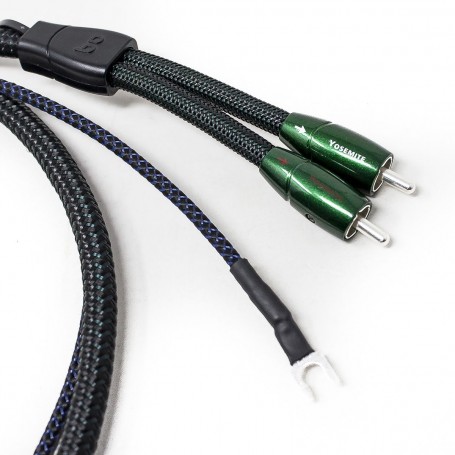
Angel
This last Angel range is none other than the series’ flagship. Consisting of two phono cables, the Angel Tonearm and Angel Turntable, this range provides the best technology and reproduction there are.
To begin with, the conductors are made of pure silver (Perfect Surface Silver), i.e. the best material in terms of signal transmission and reproduction. Thus, distortion caused by grain boundaries is greatly reduced, while the linear radio frequency noise-dissipation is maximised.
There’s also the dielectric-bias system with the radio frequency trap. Insulation still consists of air tubes and polyethylene. Like other ranges from the brand, the shield is reinforced via three layers of metal and carbon alloy. Regarding the connectors, it’s the same as on the Yosemite range, i.e. cold-welded silver-plated red copper terminations. The cable is provided with all the characteristics allowing it to be used on high-end systems. It’s perfect for a low output MC cartridge and a good turntable.
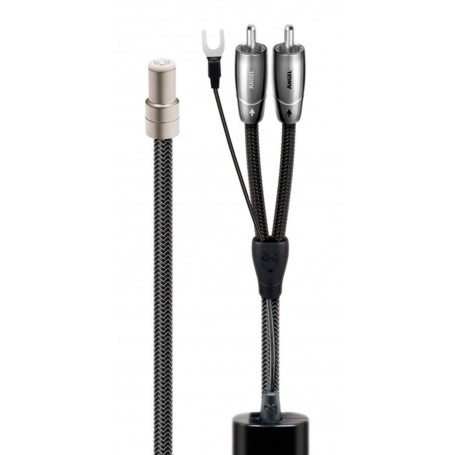
To sum up, Audioquest offers cables with remarkable performance and design at a very reasonable price. Always in the look out for the perfect sound using several methods, the American brand has become one of the best out there. If you wish to have more information on the difference between phono cable and interconnect cable, we invite you to look at our shopping guides. Our experts are at your disposal by mail or by telephone.



